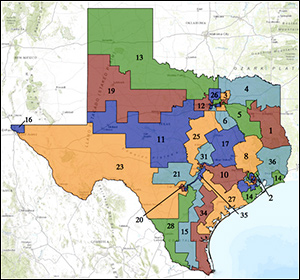By Jim Ellis
Nov. 13, 2020 — With the presidential race heading to the courts in order to resolve challenges and outstanding legal issues, and the final two Senate races advancing to Jan. 5 runoff elections in Georgia, we find the most recent relevant political action occurring in the outstanding US House races.Two more congressional race winners have been officially called. In New York, Staten Island freshman Rep. Max Rose (D) yesterday publicly conceded defeat to state Assemblywoman Nicole Malliotakis (R). While the counting substantial numbers of mail ballots continues, Malliotakis’ large 37,000-plus vote lead appears strong enough to defend against any last minute Rose charge.
The congressman indicated that he is conceding even though the vote gap is closing between he and Assemblywoman Malliotakis, a former New York City mayoral candidate. Rose stated his late-breaking progress would not be enough to overcome Malliotakis’ overall lead, thus he ends the race before the counting process concludes.
The Republican win boosts the party’s national gain total to a net seven official seats, but that number is likely to expand to at least nine and could go as high as a dozen once all of the races are completed and officially certified.
For the Democrats, Illinois freshman Rep. Lauren Underwood (D-Naperville) also capped her come-from-behind victory with an official call yesterday. After trailing for most of the counting period, Underwood surpassed state senator and frequent candidate Jim Oberweis (R) to secure a second term. Her unofficial margin is 4,604 votes from a turnout of just over 396,000 individuals, a record participation factor for this Chicago suburban district.
While other races are being called, one contest that had been declared on election night is now coming back into the undetermined realm. Originally, New Jersey freshman Rep. Tom Malinowski (D-Rocky Hill) had been projected the winner over state Senate Minority Leader Tom Kean, Jr. (R), but now the Associated Press and New York Times have rescinded their victory calls. The reason is the post-election vote totals continue to favor Kean to a large degree, cutting the congressman’s lead to only 6,275 ballots with potentially as many as 60,000 votes remaining to be counted.







